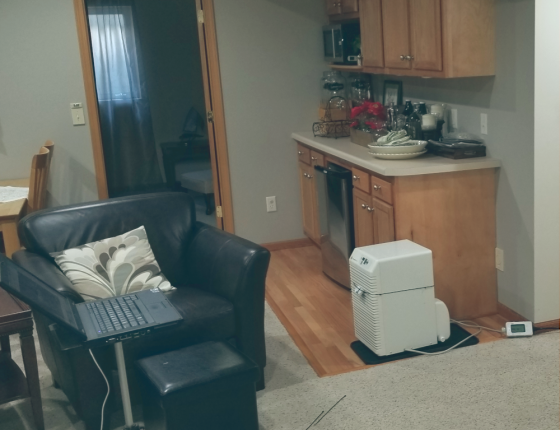Dehumidifiers are thought to be pervasive in our climate, but estimates vary widely because no Minnesota-specific research has been performed. Various estimates suggest anywhere between 8% and 66% of single-family homes in Minnesota have stand-alone dehumidifiers. Furthermore, average runtimes may exceed 2,000 hours per year. Using reported figures (power consumption ratings), this suggests stand-alone dehumidifiers can represent between 2% and 15% of single-family electrical end use. Moreover, prior work has shown that up to 90% of dehumidifiers fail to achieve their ENERGY STAR rated performance in operating conditions relevant to Minnesota (Cadmus, 2012).
The project team will characterize stand-alone dehumidification in Minnesota through broad survey-based work, assess the motivation for dehumidification, monitor the energy performance and efficacy of stand-alone dehumidification to treat underlying problems, and examine alternative solutions including high-performance dehumidification, whole-house dehumidification, and management of air or water intrusion. Field monitoring will be performed on a representative sample to characterize energy consumption and water removal rates, and typical operating conditions throughout a dehumidification season.
Energy performance and lifetime costs will be compared with best-in-class alternative units. Alternative solutions will be explored and compared, including operational strategies or unit placement, high-efficiency stand-alone dehumidification, combating water intrusion through air-sealing or leak-prevention, as well as whole-house dehumidification or zoning strategies that leverage central air conditioning units. Field data and operating comparisons of different units will support the review of the current ENERGY STAR based TRM calculation and changes that accommodate representative Minnesota operating conditions and measured field performance.
Project Summary
Objective
- Characterize stand-alone dehumidification in Minnesota.
- Assess the motivation for dehumidification.
- Monitor both the energy performance and efficacy of stand-alone dehumidification to treat underlying problems.
- Consider alternative solutions including high-performance dehumidification, whole-house dehumidification, and managing air or water intrusion.
Scope
Characterize stand-alone dehumidification systems in single-family homes
Non-energy benefits
-
Less microbial growth and the deterioration of building elements.
-
Increase indoor comfort.
